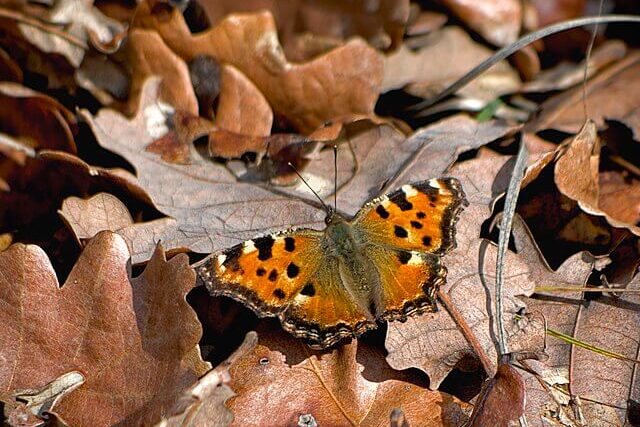
One butterfly species is making a remarkable comeback amid worrying declines in flying insects.
The large tortoiseshell, which had gone extinct in Britain after World War II for reasons unknown, is now reestablishing itself thanks to occasional incursions from continental Europe, leading to the formation of breeding colonies once again.
However, the resurgence of the large tortoiseshell hasn’t been without controversy. Some unofficial releases by maverick breeders have caused confusion, but renowned lepidopterist Neil Hulme asserts that there are numerous credible sightings that cannot be simply dismissed as captive-bred butterflies.
This summer, three larval webs, where caterpillars gather, were discovered within a six square-mile area in East Sussex, and freshly emerged adult butterflies were observed recently in the same region. The species’ return can be traced back to a significant migration from the continent in 2007. While a subsequent breeding colony on the Isle of Wight failed to thrive, the butterfly has been spotted on the island again this year. Sightings have also been reported at Elmley national nature reserve in north Kent, Birling Gap on the south coast, and various locations across West Sussex, including breeding at the rewilded Knepp last summer.
Neil Hulme acknowledges that not all reported sightings are of genuinely wild butterflies, but he emphasises that many are not releases either. The changing climate, particularly global heating, seems to be aiding the large tortoiseshell’s resurgence, enabling it to reclaim its position as Britain’s 60th native butterfly species.
——————————————————————————
At Natural World Fund, we are passionate about stopping the decline in our wildlife.
The decline in our wildlife is shocking and frightening. Without much more support, many of the animals we know and love will continue in their decline towards extinction.
When you help to restore a patch of degraded land through rewilding to forests, meadows, or wetlands, you have a massive impact on the biodiversity at a local level. You give animals a home and food that they otherwise would not have had, and it has a positive snowball effect on the food chain.
We are convinced that this is much better for the UK than growing lots of fast-growing coniferous trees, solely to remove carbon, that don’t actually help our animals to thrive.
This is why we stand for restoring nature in the UK through responsible rewilding. For us, it is the right thing to do. Let’s do what’s right for nature!
Donate today at https://naturalworldfund.com/ and join in the solution!

